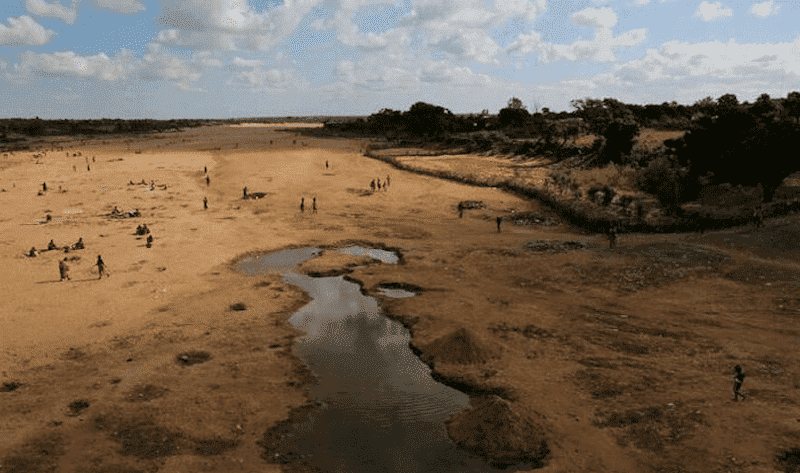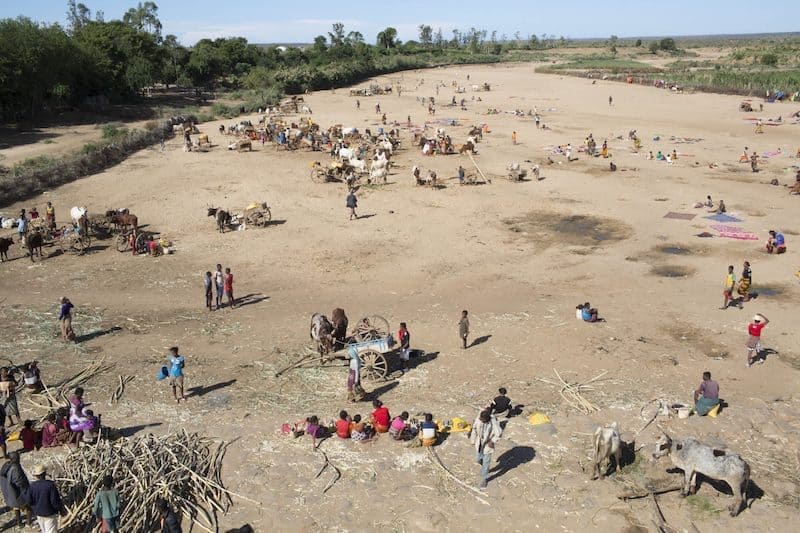From Paradise to Desolation: Madagascar's Journey of Drought and Famine
Madagascar, a tropical paradise known for its stunning biodiversity and unique wildlife, is currently facing an unprecedented crisis of drought and famine. This once vibrant and fertile land is now grappling with severe drought, particularly in the southern region, which has led to famine and widespread food insecurity. This blog looks into Madagascar's journey from drought to famine, the impact on agricultural production and food security, the areas most affected by this crisis, the role of international organizations in providing aid and support, the spotlight on organizations like Growing To Give working towards alleviating hunger in Madagascar, and finally, the hope for a brighter future for this beautiful island nation.
Madagascar's Journey from Drought to Famine - How Did This Happen?
Madagascar's current crisis of drought and famine did not occur overnight. It is the result of a culmination of factors, including climate change, deforestation, and poor agricultural practices. The effects of severe drought have been exacerbated by the El Niño weather phenomenon, which has disrupted rainfall patterns and prolonged dry spells in the region. As a result, crops have failed, livestock have perished, and water sources have dried up, leaving communities struggling to feed themselves.
Changes in one reliable rainfall patterns has caused a significant decline in agricultural productivity, with farmers unable to grow enough food to sustain their families and communities. This has led to a vicious cycle of poverty and malnutrition, as families are forced to sell their assets and resort to eating less nutritious and smaller quantities of food wherever they can find it. The situation is further compounded by the lack of infrastructure and access to markets, making it difficult for communities to recover from the impacts of widespread drought and famine.
The Impact on Agricultural Production and Food Security
The severe drought in Madagascar has had a devastating impact on agricultural production, which is primarily rain-fed in the country. The southern region, in particular, has borne the brunt of the crisis, with crops such as rice, maize, and cassava failing to survive the arid conditions. As a result, farmers have experienced significant losses, leading to a decline in their incomes and the inability to afford basic necessities.
The decline in agricultural production has also affected nationwide food security. With limited access to nutritious food, malnutrition rates have skyrocketed, especially among children and pregnant women. The lack of proper nutrition not only poses immediate health risks but also has long-term consequences for the physical and cognitive development of individuals, perpetuating the cycle of poverty and food insecurity.
Parts of the Country Most Affected by Drought and Famine
While Madagascar as a whole has been impacted by the drought and famine crisis, the southern region has been hit the hardest. The districts of Ambovombe, Tsihombe, and Beloha have been declared as the "Integrated Food Insecurity Phase Classification 4" areas, which means they are experiencing a severe food crisis. In these regions, the majority of the population is dependent on agriculture for their livelihoods, and the failure of crops has left them without any means to sustain themselves.
The southern region of Madagascar is characterized by its harsh climate and fragile ecosystems, making it highly vulnerable to the impacts of climate change and drought. The prolonged dry spells and scarcity of water have not only affected agricultural activities but also led to the migration of people in search of better opportunities and resources. The displacement of communities further strains the limited resources available in neighboring areas, exacerbating the overall food insecurity situation.
The Role of International Organizations in Providing Aid and Support
Recognizing the urgent need for assistance, international organizations have stepped in to provide aid and support to Madagascar during this crisis. The United Nations, through its agencies such as the World Food Programme (WFP) and the Food and Agriculture Organization (FAO), has been working closely with the Malagasy government to address the immediate needs of affected communities. These organizations have been providing emergency food assistance, supporting agricultural recovery programs, and implementing long-term strategies to build resilience against future droughts.
Additionally, non-governmental organizations like Growing To Give have been actively involved in helping to mitigate starvation and food insecurity in Madagascar. Growing To Give focuses on water smart agricultural technologies, empowering local farmers with the knowledge and resources to improve their yields and amid changing climatic conditions. Through their projects, they aim to break the cycle of poverty and hunger, promoting self-sufficiency and community resilience.
Spotlight on Organizations Like Growing To Give Working Towards Alleviating Hunger in Madagascar
Growing To Give is a shining example of an organization dedicated to alleviating hunger in Madagascar. They operate on the belief that everyone has the right to access nutritious food and that sustainable agriculture can play a significant role in achieving this. Through their initiatives, they work closely with local communities, providing training on water-smart agricultural practices, establishing community farms and gardens, and promoting income-generating activities.
By focusing on empowering individuals and communities, Growing To Give enables them to become self-reliant and resilient in the face of drought and famine. Their holistic approach, which integrates agriculture, nutrition, and livelihoods, has the potential to create lasting change and break the cycle of poverty and food insecurity in Madagascar.
Hope for a Brighter Future for Madagascar
Despite the challenges faced by Madagascar, there is hope for a brighter future. The efforts of international organizations, like the United Nations, and local initiatives, such as Growing To Give, are making a tangible difference in the lives of affected communities. By investing in sustainable, water-smart agriculture, addressing deforestations, promoting climate resilience, and empowering individuals, Madagascar can build a more secure and prosperous future.




.png)
.png)
.png)

.png)